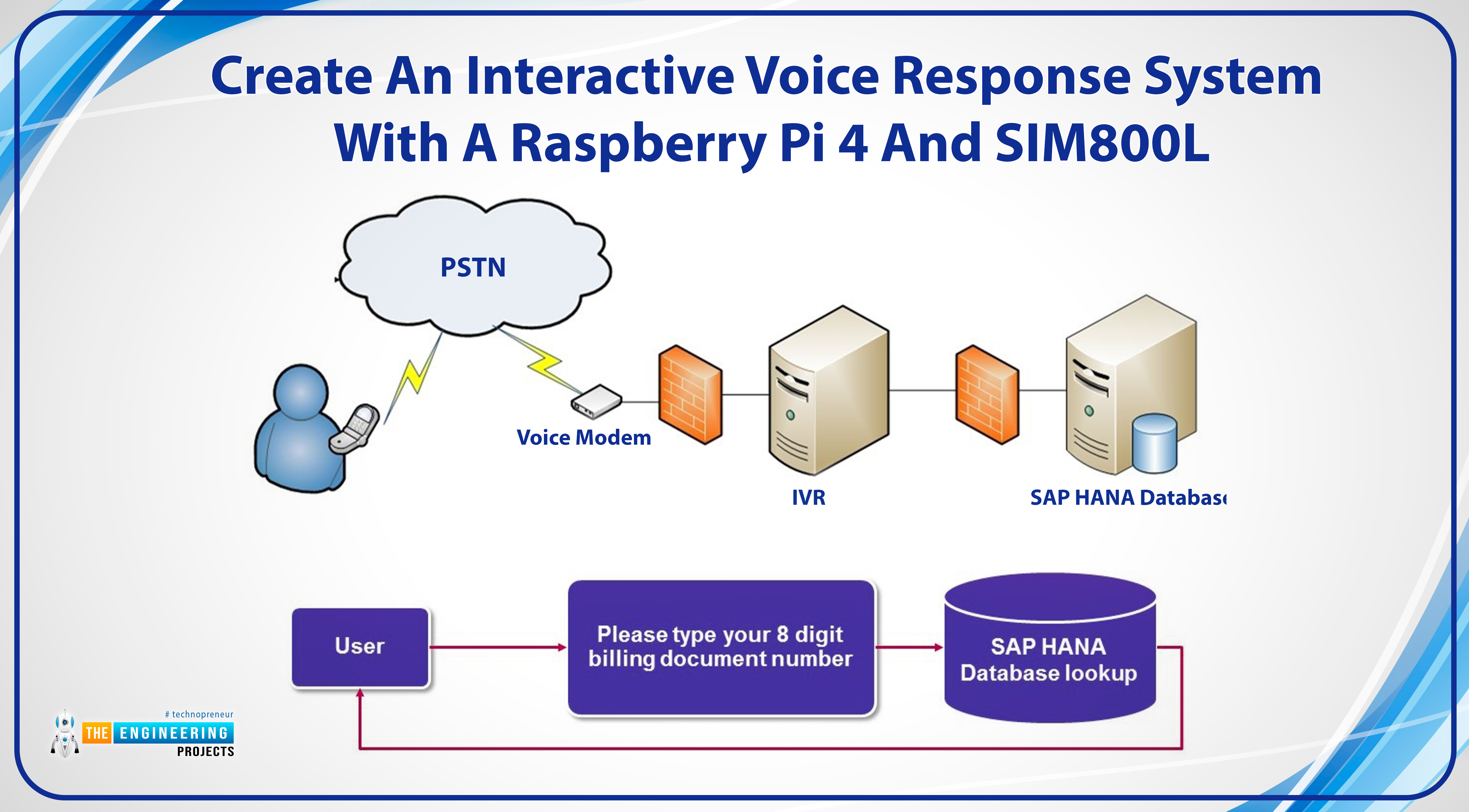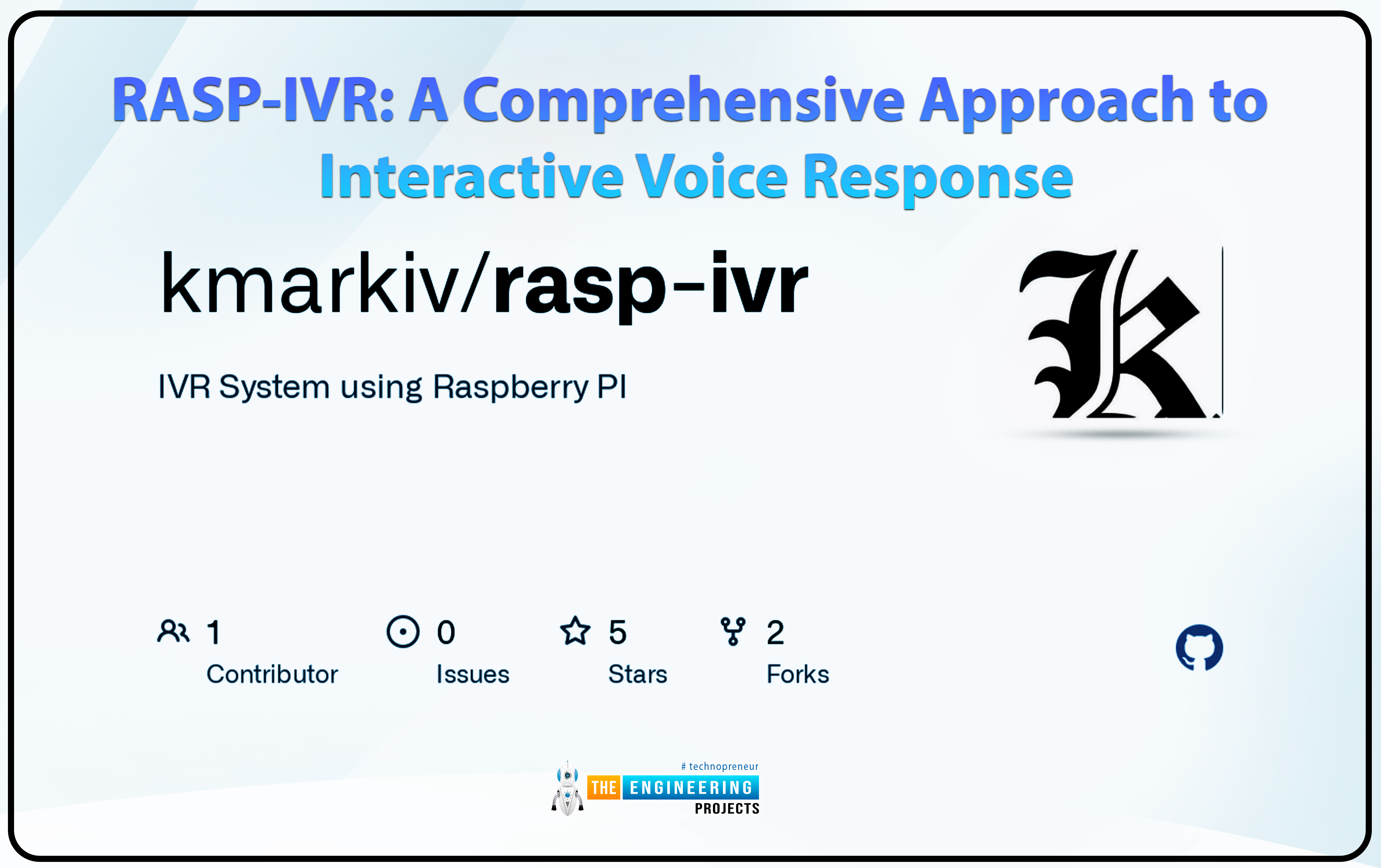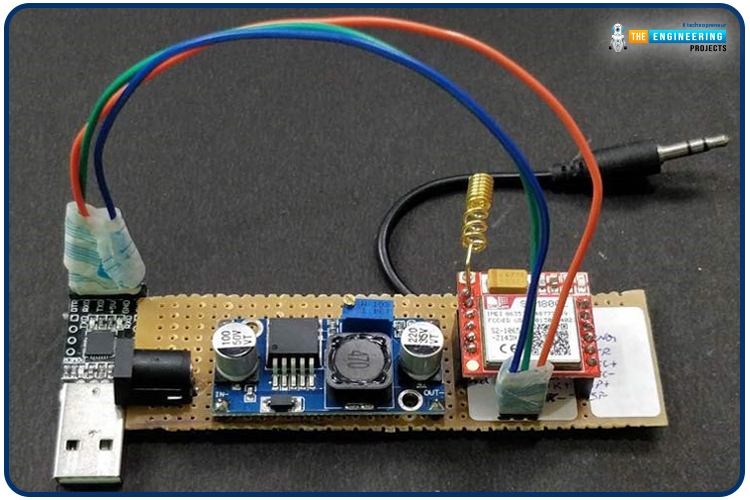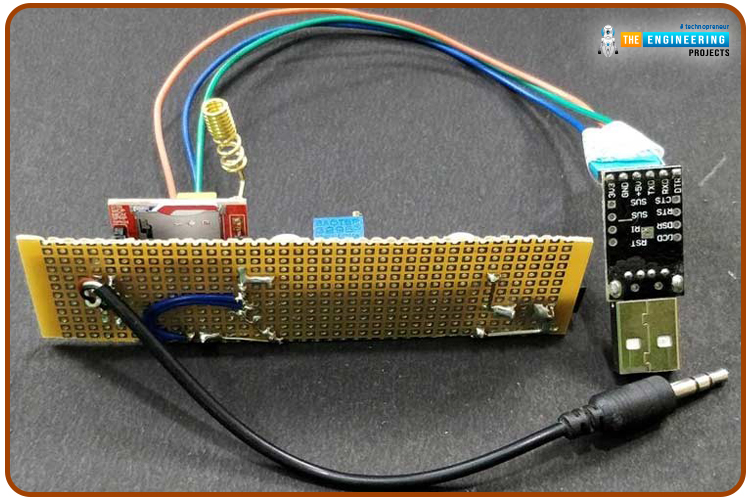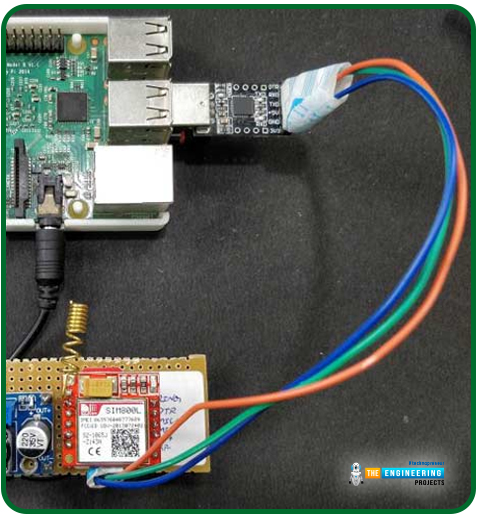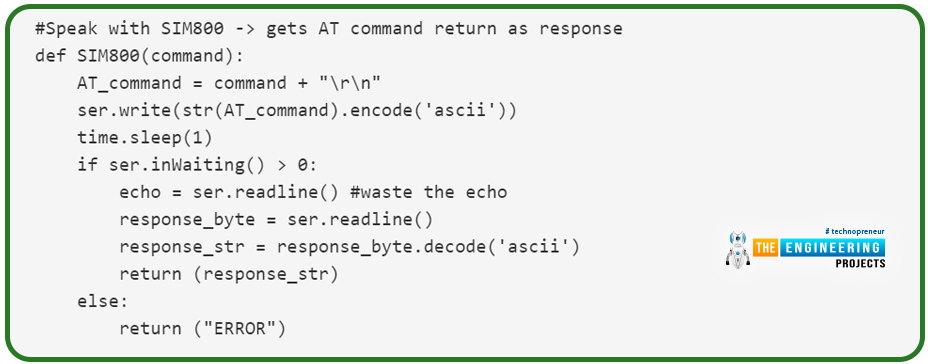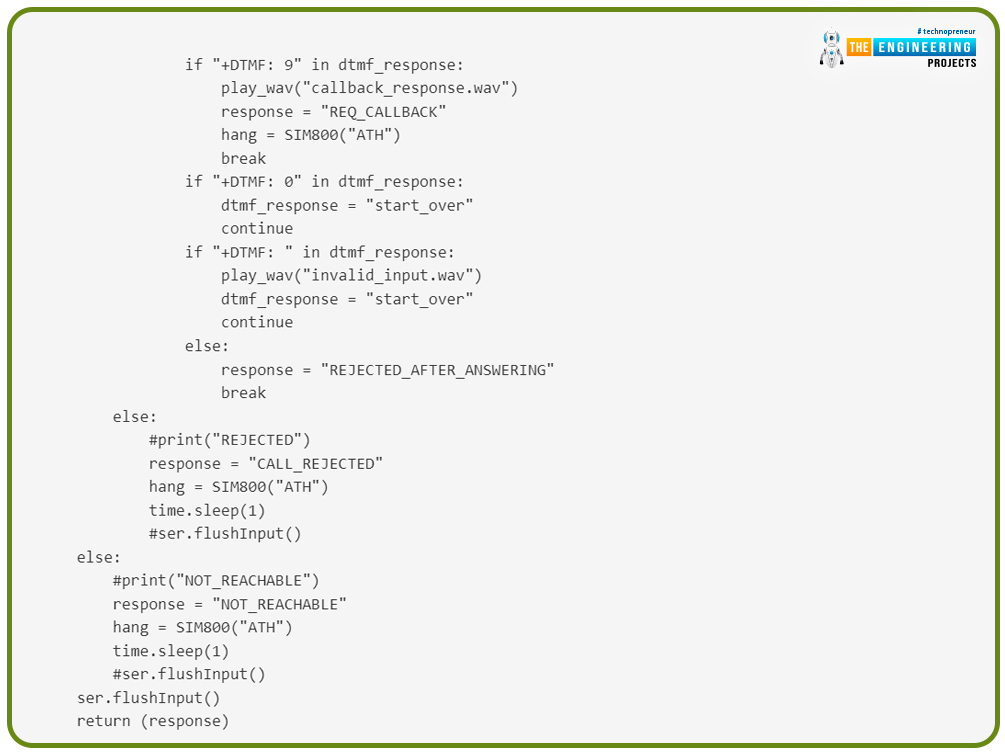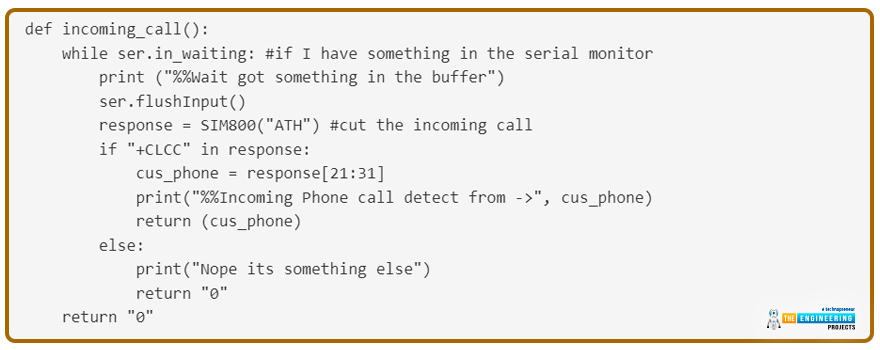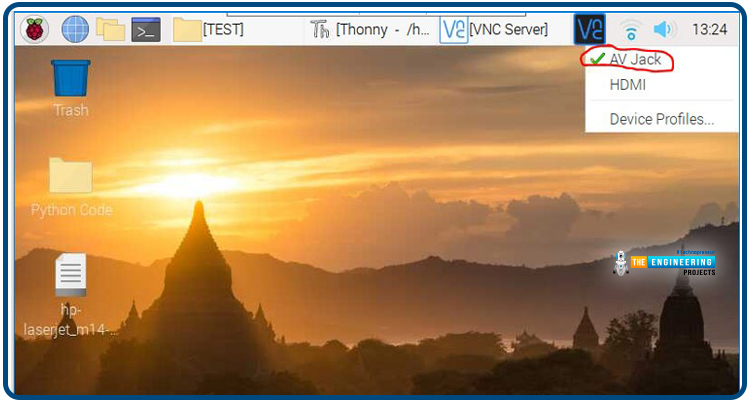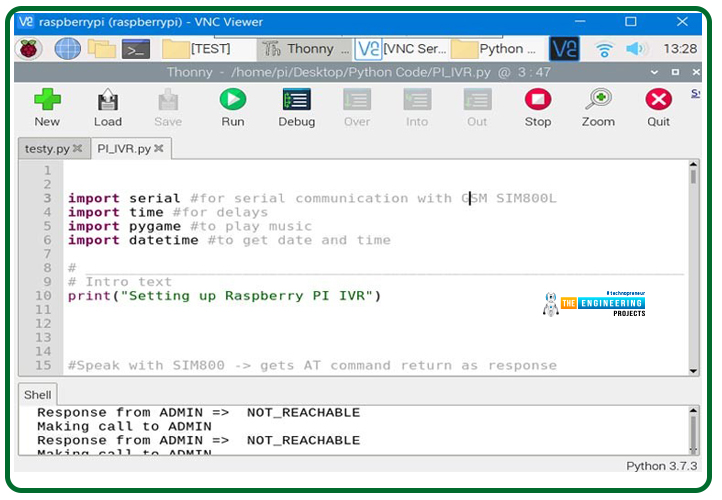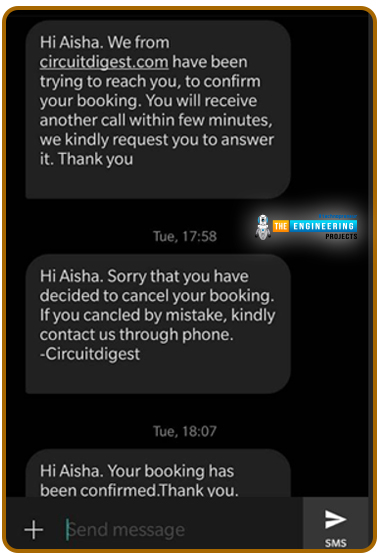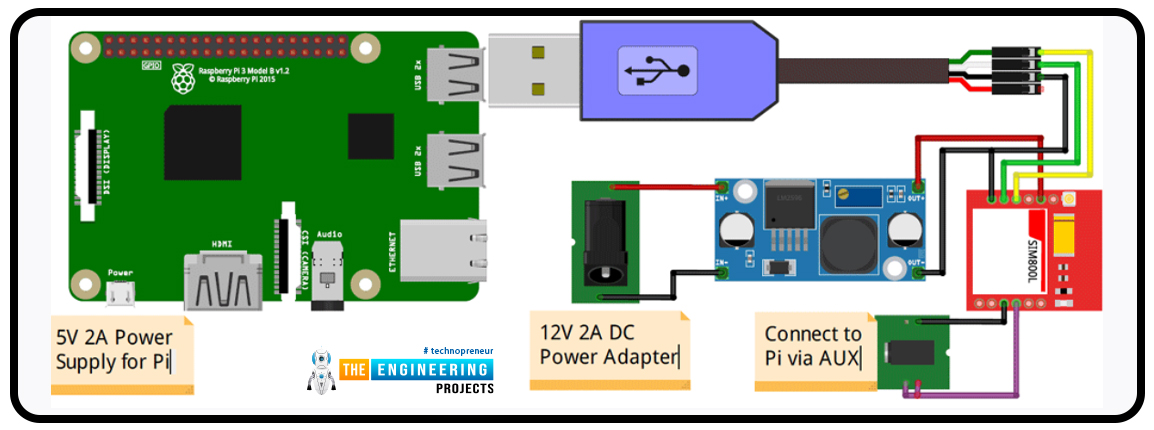
A low-literate audience can nevertheless have their voices heard and their questions answered by using an IVR system, as has been proven time and time again. However, achieving such aims in a development setting calls for a cheap system that welcomes input from various parties. RASP-IVR is an inexpensive IVR system that operates on a PI 4 and a local Global System for Mobile Communications modem. RASP-IVR was designed as an open-source, community-driven solution. It's unusual to find a customer-focused company that still uses human operators rather than an interactive voice response system. Credit card companies typically have IVR systems that can be used to make payments or file fraud reports. Airlines use elaborate IVR systems to schedule flights and check their current status. To facilitate medication refills, pharmacies implement interactive voice response systems. Furthermore, IVRs are widely used for forwarding calls to other extensions and providing directory assistance.
Enterprises of all sizes have adopted IVR technology due to its cost savings over using actual, flesh-and-blood staff. The number of callers who desire to speak with a human indicates an IVR system's success. As the percentage drops, the system becomes more efficient. Of course, some IVRs will never let you bypass the system and talk to a human being. However, that's frowned upon even by IVR advocates. As most people know, Raspberry Pi is a development board that packs a fair amount of processing power into a little package (about the size of a palm). When coupled with python's adaptability, this might lead to the creation of a wide variety of useful but diminutive devices. I recently had to construct an interactive voice response system using a Raspberry Pi, which essentially entails dialing phone numbers, sending messages, and receiving DTMF inputs from the recipient when they pick up the phone.
| Where To Buy? | ||||
|---|---|---|---|---|
| No. | Components | Distributor | Link To Buy | |
| 1 | Jumper Wires | Amazon | Buy Now | |
| 2 | Raspberry Pi 4 | Amazon | Buy Now | |
Components
Pi 4
SIM800L GSM Module
2G SIM Card (Airtel)
Aux Cable
LM2596 Buck Converter Module
USB to TTL Converter
12V 2A Adapter
Perf Board
Berg Sticks
Connecting wires
Soldering Kit
Interactive voice response and its Operation
Computer and phone systems can be integrated into various ways, and IVR systems are one such way (CTI). Key tones are the most common way a phone can exchange data with a computer. Dual-tone multi-frequency frequency is what you get. A telephone's number pad emits a low and high-frequency tone. A "1" can be generated in a 697-Hz tone or a 1209-Hz tone, both of which are recognized by the PSTN as the numeral 1. For a computer to interpret the DTMF frequency produced by a phone, specialized hardware known as a telephony circuit or telephony board is required. Using a telephony board to connect a computer to a phone line and some low-cost IVR software, it is possible to create a rudimentary IVR system. The IVR program lets you record messages and menu items that callers can navigate using their phone keypads.
Speech-recognition software is a part of more sophisticated IVR systems, enabling callers to interact with computers via voice commands. The technology behind speech recognition is now advanced enough to comprehend things like full names and long series of digits. Text-to-speech software can be used on the receiving end to fully automate a firm's outgoing telephone calls. To better serve customers, computers may now generate personalized text to answer their inquiries, such as financial statements or flight times, and have an automatic voice read to them. Voice extendable mark-up language is a popular foundation for many cutting-edge interactive voice response systems today.
RASP-IVR: A Comprehensive Approach to Interactive Voice Response
The "RASP-IVR" moniker comes from the fact that it was created on the inexpensive Linux-based single-board computer known as a raspberry pi. The operating system is built on RASPBX, with several additions and modifications to improve compatibility for interactive voice response (IVR) use. Model 4 Raspberry Pi and GSM mobile phone modem make up the system. An Asterisk server is connected to the GSM modem via an interface. FreePBX is a web-based interface for managing an Asterisk server, allowing users to set up and modify IVR menus and VoIP settings. Using open-source libraries, we've written scripts to bring RASPBX's functionality for Voice over IP (VoIP), short messaging service, and localized SIP transfers to a broader.
Depending on the situation, the Asterisk domain server can route the incoming GSM call over a local or worldwide VoIP network. The VoIP communications can be directed to different extensions based on the client's dial input. They can be answered from any desktop or mobile device with a domestic SIP account and a SIP client like Zoiper. Furthermore, the VoIP conversation can be routed to third-party platforms like Twillio to use their cloud-based solutions like speech-to-text engines or cloud-based storage. In contrast, RASP-IVR requires no external resources, making it ideal for collaborative innovation or limited rollouts.
Why use GSM Module and not just the API to make phone calls?
The cost of using an API to make phone calls from a Raspberry Pi can add up quickly. You can use python and Raspberry Pi to make inexpensive phone calls using several different service providers, including Twilio. These solutions are fantastic; however, the price has two significant drawbacks. Almost wherever you go, you'll be charged by the minute, which goes for both outgoing and incoming communications. You might not think this is significant, but if you make more than a hundred calls daily, you'll soon realize how much it costs. The second issue is buying and managing a different cellphone number from which to make these calls. You cannot use an existing number because these are all made up, and depending on your area, you may have to pay more to get a number that works in your nation.
How can I make inexpensive phone calls with a Raspberry Pi 4?
After researching the rates of several API-based telephone conversation services, it became evident that the cheapest option is to use a Gsm technology like SIM800L with Pi to place calls through a network service provider like Airtel. To that aim, we'll connect a SIM800L module to a Raspberry Pi so we can send text messages and make phone calls automatically.
Which GSM module should we use with my Raspberry Pi 4 to do IVR calls?
As 5G and the IoT become increasingly popular, numerous innovative new GSM modules have been released that are compatible with 5G networks while using less energy. But I had the bright notion of employing a ubiquitous and inexpensive commodity to purchase at any nearby hobby store. So, we put the popular SIM800L and the Ai-thinking A9 through their paces. Even when just powered by my laptop's USB port, the artificial intelligent-thinker A9 Gsm modem proved completely reliable and responsive right from the get-go. However, the primary issue was that the in-line voice input interface did not operate very well, and the artificial intelligent Thinker A9 Gsm modem did not enable DTMF recognition. So, I switched to the SIM800L Global System for Mobile communications Modem, a power-hungry beast that, if fed enough juice, proved ideal for this task. There is no need for expensive external DTMF hardware because it has both in-line audio for playing automated voice and built-in DTMF detection.
What kind of SIM card works with the SIM800L?
The SIM800L is only compatible with 2G networks, not 3G or 4G. Only Airtel and BSNL provide 2G services in this area. Therefore, get an Airtel SIM card or use one we already have. After purchasing a new Airtel subscriber identity module, card, I activated it on my cell phone and began using it with my SIM800L.
A SIM800L-Based interactive voice response System's Typical Circuit Diagram
Complete schematics for a Raspberry Pi-based telephone and message system are provided below. It's clear how simple it is to draw connections between ideas.
Powering the SIM800L Module
The method by which the SIM800L module is supplied with electricity is crucial here. Within a voltage range of 3.7V to 4.2V, the SIM800L chip functioned. The optimum working voltage is close to 4V. For the SIM800L module, we needed to reduce the adapter's 12V 2A output to 4V; thus, we utilized an LM2596 Buck converter. Thicker, shorter wires are preferable when linking the buck component to the SIM800L so that the module can easily handle the high current. When powered, if the element detects improper power connections, it will reset and send invalid data through the serial port. You'll need a 12V 2A adapter to power the SIM800L module, and you should use bulky wires just to carry a lot of current without causing too much resistance. Connecting a fully loaded Lithium battery across the SIM800L module's Vcc and Ground pins should resolve any power difficulties.
SIM800L-to-Raspberry Pi Serial Data Transfer
Those unfamiliar with the jargon of electronics engineering know that "AT Commands" are what we use to talk to the SIM800L module. Calling, texting, and keypress detection are just a few of the many functions that may be accomplished with AT commands. This tutorial will use Py from RPi to transmit these AT instructions to the Global System for Mobile Communications SIM800L module. Connecting the SIM800L module's Rx and Tx pins to the Raspberry Pi's USB port required a universal serial bus to TTL converter.
Audio transmission from the Pi 4 to the SIM800L component
Through its MIC+ and microphone- pins, the SIM800L component supports mic input. Any audio information sent to these pins after the call has been placed will play on the call recipient's phone. In our scenario, we have to play recorded audio from the Rpi; however, these go pins are primarily designed to connect a microphone. To hear it on the GSM component, we must convert our audio output from the RPi through the 3.5mm port, known as line-out audio, to mic-level audio. You might construct a line-to-mic converter circuit to complete this task professionally. Still, I connected the two devices and set the volume level on the Raspberry Pi to barely two decibels. I had no trouble getting it to function this way.
I assembled the entire circuit on the perf board, ensuring the voltage connectors got enough lead to offer low-resistance contact. This is how my board appears after soldering. Since the LM2596 is an adjustable buck converter, ensure you use the onboard trim pot to set the voltage output to 4 Volts before using it. Anything above 4.2 volts can permanently damage the SIM800L component.
Simply turn on the circuit and attach the Cell phone card when you get here. Once more, confirm that the SIM card is inserted correctly and that the antenna is securely fastened. If all is done correctly, you should see the SIM800L board's inbuilt led flashing once every three seconds. As a result, the SIM800L module may create a network using our SIM card. This guarantees the appropriate Operation of our powering circuit. Now that the board is connected, we can build our Python code without an RPi.
Making Calls and Sending SMS on a Pi 4 with a SIM800L Component
You may find the entire Python script for the RPi interactive voice response system at the end of this tutorial. Due to the size of the code, it is not practical to detail every step. It is incorporated with comments and procedures to do reading and comprehending the code easier. Importing the necessary header files allows us to launch the program. We used the serial module to enable the serial connection between the Raspberry Pi and SIM800L components. The pygame software is employed to play audio, in this case, audio files. We also have the time component to cause delays, so that's something. You don't need to install anything new because the Buster OS comes pre-installed with all three packages.
import serial #for serial communication with GSM SIM800L
import time
import pygame #to play music
def SIM800 (Command)
Using this method, an AT command can be sent from a PI computer to a SIM800L device and then received in return. All AT commands transmitted to SIM800L must be written in ASCII and conclude with the character "rn." Before sending them to SIM800L, this method appends the character "rn" to all our AT instructions and transforms them into the ASCII character set. Once the response has been read, it decodes the ASCII data so we may utilize them in our code.
def SIM800(command):
AT_command = command + "\r\n"
ser.write(str(AT_command).encode('ascii'))
time.sleep(1)
if ser.inWaiting() > 0:
echo = ser.readline() #waste the echo
response_byte = ser.readline()
response_str = response_byte.decode('ascii')
return (response_str)
else:
return ("ERROR")
def wait_for_SIM800()
This function is quite similar to the one before, except instead of sending a value to the SIM800 component, it just awaits a response from the SIM800L module. As a result, it returns the answer when it receives one.
def wait_for_SIM800():
echo = ser.readline() # waste the echo
response_byte = ser.readline()
response_str = response_byte.decode('ascii')
return (response_str)
def Init_GSM()
The GSM modem is ready for interactive voice response operations after being initialized. Before sending particular AT instructions to the Gsm modem to activate the message and DTMF receiver modes, it sends an "AT" to check for the module and waits for an "OK" response. In addition, it turns off all alerts so that we won't be distracted throughout a call by texting notifications.
def Init_GSM():
if "OK" in SIM800("AT"):
if ("OK" in (SIM800("AT+CLCC=1"))) and ("OK" in (SIM800("AT+DDET=1"))) and ("OK" in (SIM800("AT+CNMI =0,0,0,0,0"))) and ("OK" in (SIM800("AT+CMGF=1"))) and ("OK" in (SIM800("AT+CSMP=17,167,0,0"))): # enble DTMF / disable notifications
print("SIM800 Module -> Active and Ready")
else:
print("------->ERROR -> SIM800 Module not found")
def play_wav (file_name)
After answering the call, the following method is employed to play the audio files. We have recorded audio files like "cancel.wav," "confirm.wav," and "intro.wav" stored. Following the user's keyboard answer, we must play every one of these files. We can use the play audio function to play any audio file of our choosing. Assume that your Python script is stored within the same folder as these audio files.
def play_wav(file_name):
pygame.mixer.init(8000)
pygame.mixer.music.load(file_name)
pygame.mixer.music.play()
#while pygame.mixer.music.get_busy() == True:
#continue
def Call_response_for (phone_number)
The software's most crucial feature is this one. It obtains the mobile number that has to be called and offers the callback for that session. Any response, such as NOT REACHABLE, CALL REJECTED, CONFIRMED, CANCELED, etc., can be given in return. The function calls a specified phone number using AT instructions and then plays recorded audio. The system then listens for the caller's DTMF reply and, depending on that reaction, plays the relevant recorded voice before informing us of the caller's choice. The method will also respond with that information if the caller declines the call or cannot be reached.
def Call_response_for (phone_number):
AT_call = "ATD" + phone_number + ";"
response = "NONE"
time.sleep(1)
ser.flushInput() #clear serial data in buffer if any
if ("OK" in (SIM800(AT_call))) and (",2," in (wait_for_SIM800())) and (",3," in (wait_for_SIM800())):
print("RINGING...->", phone_number)
call_status = wait_for_SIM800()
if "1,0,0,0,0" in call_status:
print("**ANSWERED**")
ser.flushInput()
play_wav("intro.wav")
time.sleep(0.5)
dtmf_response = "start_over"
while dtmf_response == "start_over":
play_wav("press_request.wav")
time.sleep(1)
dtmf_response = wait_for_SIM800()
if "+DTMF: 1" in dtmf_response:
play_wav("confirmed.wav")
response = "CONFIRMED"
hang = SIM800("ATH")
break
if "+DTMF: 2" in dtmf_response:
play_wav("canceled.wav")
response = "CANCELED"
hang = SIM800("ATH")
break
if "+DTMF: 9" in dtmf_response:
play_wav("callback_response.wav")
response = "REQ_CALLBACK"
hang = SIM800("ATH")
break
if "+DTMF: 0" in dtmf_response:
dtmf_response = "start_over"
continue
if "+DTMF: " in dtmf_response:
play_wav("invalid_input.wav")
dtmf_response = "start_over"
continue
else:
response = "REJECTED_AFTER_ANSWERING"
break
else:
#print("REJECTED")
response = "CALL_REJECTED"
hang = SIM800("ATH")
time.sleep(1)
#ser.flushInput()
else:
#print("NOT_REACHABLE")
response = "NOT_REACHABLE"
hang = SIM800("ATH")
time.sleep(1)
#ser.flushInput()
ser.flushInput()
return (response)
def send_message (message, recipient)
The send message method in this program enables us to send messages in addition to making calls and receiving responses. The message is sent after it receives both the text and the participant's mobile number.
def send_message(message, recipient):
ser.write(b'AT+CMGS="' + recipient.encode() + b'"\r')
time.sleep(0.5)
ser.write(message.encode() + b"\r")
time.sleep(0.5)
ser.write(bytes([26]))
time.sleep(0.5)
print ("Message sent to customer")
time.sleep(2)
ser.flushInput() # clear serial data in buffer if any
def incoming_call()
The very last method I created for this project allows you to figure out who is calling by their phone number. Some people might attempt to call back to this line because this SIM card will make calls to new persons. If so, you can use this function to see which line is making the call, send them a message, or create a follow-up call if necessary.
def incoming_call():
while ser.in_waiting: #if I have something in the serial monitor
print ("%%Wait got something in the buffer")
ser.flushInput()
response = SIM800("ATH") #cut the incoming call
if "+CLCC" in response:
cus_phone = response[21:31]
print("%%Incoming Phone call detect from ->", cus_phone)
return (cus_phone)
else:
print("Nope its something else")
return "0"
return "0"
It's time to create the main program, in which we will employ all of these functions to accomplish something nice now that all of them have been defined. The customer id and phone number are now being hard-coded for demonstration purposes, but you can obtain them using a Shopify API request or retrieve them from a spreadsheet as needed. For testing purposes, we use the customer's identity, "AISHA," and phone number, "9877XXXXXX."
cus_name = "Aisha"
cus_phone = "968837XXXX"
We will begin a serial conversation with a 15-second delay at 9600 baud speeds within the main endless while loop block. Considering that various SIM800L components may operate at a different baud rate, ensure that you enter the correct COM folder and baud rate in this field.
ser = serial.Serial("/dev/ttyUSB0", baudrate=9600, timeout=15) # timeout affects call duration and waiting for response currently 30sec
print("Established communication with", ser.name)
After making the call and getting the necessary reply from the consumer, we will send the recipient a text based on their response. For instance, if the answer is validated, we can send a message about it. Likewise, we can alter the message if the client provides a different reply.
response = Call_response_for(cus_phone) #place a call and get response from customer
print ("Response from customer => ", response)
if response == "CONFIRMED":
text_message = "Hi " + cus_name + ". Your booking has been confirmed.Thank you. -Circuitdigest"
send_message(text_message, cus_phone)
if response == "CANCELED": # if the response was to cancel
text_message = "Hi " + cus_name +. "Sorry that you have decided to cancel your booking. If you canceled by mistake, kindly contact us by phone. -Circuitdigest"
send_message(text_message, cus_phone)
if ((response == "CALL_REJECTED") or (response == "REJECTED_AFTER_ANSWERING")): # if the response was rejected
text_message = "Hi " + cus_name + ". We from circuitdigest.com have been trying to reach you, to confirm your
booking. You will receive another call within a few minutes, and we kindly request you answer it. Thank you"
send_message(text_message, cus_phone)
Testing our interactive voice response system on the Pi
Just double-check the connectors and turn on the GSM component board and RPi. Make that the appropriate COM port is listed in the code before running the application; in my instance, it was "/dev/ttyUSB0." After that, check that the sound is set to atrioventricular ( av ) node jack by right-clicking on the loudspeaker icon and that the audio level is low.
Simply alter the contact number and client name in the following step to your liking, or modify the program to retrieve the information from an excel spreadsheet or cloud Application programming interface, and our automated interactive voice response is ready to go.
The application will dial the specified number and listen for DTMF responses. Additionally, it will play relevant sound clips and transmit a text message dependent on the recipient's response. Below are a few sample messages that I obtained on my cellphone.
The audio tracks and texts can easily be changed to meet your application's needs. I hope the assignment was enjoyable for you and that you learned something.
RASP-IVR application
Call routing within a company is among the most popular uses of an interactive voice response system. Previously, you would employ a switchboard controller or receptionist to answer all callers and direct callers to the appropriate line. When answering customer calls, an interactive voice response system is beneficial. A caller may be given a menu of choices and inquiries about the system's type of call. If possible, the system will respond to the more typical inquiries while referring the less common questions to qualified experts.
Interactive voice response systems are excellent for getting detailed, current info from databases—for instance, movie times. On a significant database, the weekly movie lists are updated. The cinema theater's website can also be filled with information from these databases. When making a call to the cinema, the caller can use the keypad or voice instructions to search the database for movie timings. The same technology can be used to check account balances, evaluate the latest credit card payments, check flight times, refill medicines at a pharmacy, plan auto maintenance, and register for university classes. The list is endless.
Interactive voice response systems are helpful for sales as well. A sales department can create an interactive voice response order form, enabling callers to complete it on their phone's keyboard. When the form is finished, the computer can send a copy to a sales team representative through fax or email. The sales department could also use the IVR as a virtual flyer that highlights the characteristics of a good or service and offers customers the chance to speak with a live agent at any time.
Marketing teams and election pollsters can use the interactive voice response systems' outgoing call functions. A political campaign may send a voicemail message with a phone-in survey for voters to complete. An advertiser may determine whether a buyer is interested in his goods or services. They might press a key to speak with a sales representative if interested in the advertiser's computerized pitch.
Electronic alert systems may also be combined with interactive voice response systems. Let's assume that your company has worldwide workers working from home. Worker contact details, such as home phone numbers, mobile phone numbers, fax numbers, pager numbers, email addresses, etc., can be coded into the interactive voice response system. The IVR prog will use every form of contact until a connection is established if a call has to be directed to that worker.
Transcribing health records is an intriguing application of interactive voice response technology. Currently, doctors record their patient notes and submit the audio to a service that performs medical transcription. However, a doctor may contact the interactive voice response system, record his notes, and have a filed transcript emailed to their office thanks to advanced speech recognition software.
The creators have been collaborating with a few Rwandan health industry partners. The developers want to create solutions that will expand the coverage and reach of the partners' already-existing face-to-face operations. Interactive voice response can extend services to clients who cannot travel to existing facilities. Interestingly, one non-partner frequently visits remote communities and considers the interactive voice response as a tool for drawing people to these outreach efforts. By providing automated processes that operate outside of regular business hours or by gathering and analyzing customer data, the IVR can lessen the employees' workload. One partner will use this function to computerize donor-sponsor reports. In the opinion of one of the partners, the interactive voice response is a small step towards a more significant switch from hard copies to soft copies. Before conversing with a counselor, the web service might pull up the patient's EHR using information gathered by the IVR synchronized with the hard copy to soft copy system and the interactive voice response. After the call, a text message is sent to the customer, and another is sent to the dispatch center that is most convenient for the client.
Advantages of RASP-IVR
Using its speech and texting platforms, the RASP-interactive voice response system opens the door to creating unique apps that can assist with contextually relevant difficulties. Features including automated call rerouting, user-selected content, caller audio content recording, text message-based engagement, data collecting, and tailored resources that can be accessed on caller ID are all made possible by the RASP-Interactive voice response system.
We acknowledge, however, that interactive voice response-based solutions, like all technology, must be developed to enhance current human development efforts. The following are IVR-based systems' benefits, although certain limitations are covered below.
A voice-only system is more appealing to people with limited literacy
than texting or internet-based apps.
To use an IVR system, users just dial a number on their readily available cell phone, as they would with any other service.
I am using a mobile phone to get entry to discreet and stigma-free services like psychological counseling, and family planning might be advantageous.
Interactive voice response systems can reconnect dropped calls thanks to caller ID and track many simultaneous activities from the same telephone.
Finally, the speech signal is informative, providing estimations of the speaker's age, body weight, sexuality, anxiety, and other health indicators.
Interactive voice response development Obstacles
Some drawbacks exist, though, which must be weighed against the advantages. Since the interactive voice response system is language-dependent, the prompts must be recorded in users' native tongues. Interactive voice response ern systems are constrained by emerging communities' cultural and social conventions, even though the telephone interface is familiar.
Users more accustomed to interpersonal communication may resist automated data inquiries and exchanges. To that end, one of the partners believes that in-person demonstrations of the IVR system to clients will provide the most positive results.
Another barrier we discovered for people with few resources was the lack of phone access. Due to fluctuating electricity prices and supply, charging a phone is not always possible. In many cases, people will use various telephones, or multiple people will use the same phone. It's possible that follow-up calls and texts won't be received.
In addition, having a shared phone line can raise questions and suspicions about who is calling. Finally, there are several ways in which users' privacy could be compromised by IVR technologies, from the storage and transmission of data to the reporting of such data to the difficulty of preventing one user from accessing the information of another.
The existing system demands developer-side programming expertise that a CBO might not have access to. The dongle's inability to talk to the Raspberry Pi occasionally resulted from a hardware malfunction. The network failed in some cases. When making a mobile-to-mobile call, one internet provider did not forward the touch-tone signals.
Unfortunately, the system can only handle a single call at a time, making it unsuitable for deployments with a high rate of incoming calls. Our co-operators who expect low call volumes can benefit from the RASP-IVR. A shift to a more scalable approach would be justifiable if volume increased.
Conclusion
Through this tutorial, we have gained a thorough understanding of IVRs and their inner workings. We proceeded to assemble our own Raspberry Pi 4 IVR with a handful of components and some test audio samples. We have investigated the mechanism behind this system and spoken about some of the primary uses for the IVR system. We also had a look at some of the advantages and disadvantages of using it. The following tutorial will teach you how to connect a USB barcode scanner to a Raspberry Pi so that you can read 2D barcodes.



